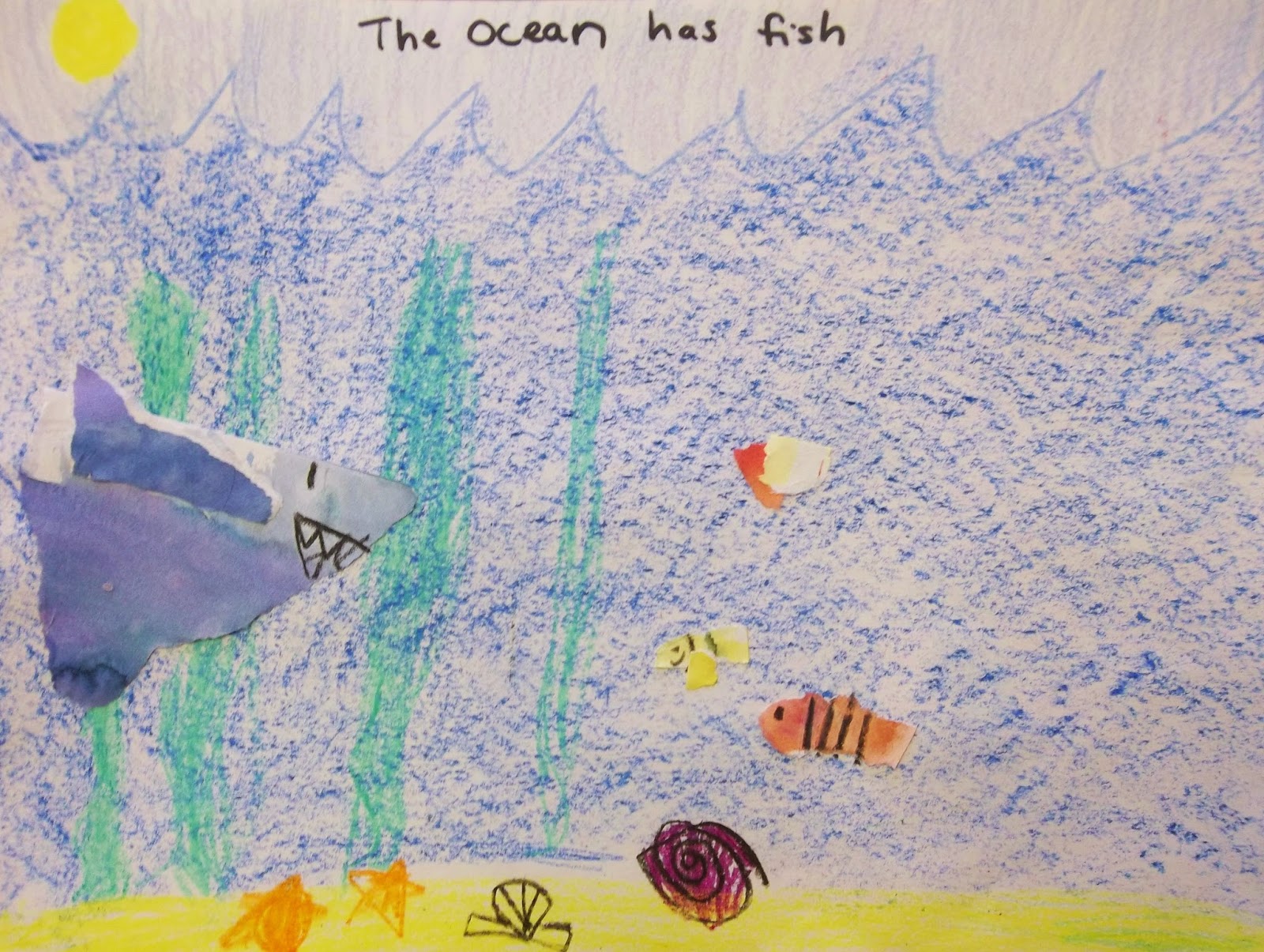You really can't go wrong with animals. Kids love them. There's so many to learn about. And you can tie art and science together by talking about animals, habitats, life cycles,etc. You can also tie in to social studies by looking at where in the world different animals are found, and how people around the world make art about animals because they are beautiful or scary or symbolic. Here's a look at some things we've been working on K-2 in My Blue Art Room (and we've been so busy the poor blog has been a bit neglected- on the other hand, we're in the PA top 10 on Artsonia right now... guess where my energies have been directed....)
With Kinders we learned about different habitats and landscape and drew a background picture for where our animals could live.Then we painted some textured paper ala Eric Carle after looking through his Animal Alphabet (hey literacy connection!). Finally we learned how to tear shapes out of paper to create animal shapes, making sure to choose an animal that would match our habitats.
I asked students what was in their picture and wrote down their sentence. I love hearing their descriptions. I like to use titles or one sentence descriptors as an introduction to art writing- something very important to me.
First graders started their "Art around the world" unit, and looked at Australian Aboriginal dot paintings for inspiration. We talked about what animals lived there and how they are very different than animals in other places because of how they developed on an island continent separate from other continents.
They used an animal picture resource sheet for reference and chose which Austalian animal they wanted to paint. They then painted the interior of their animal shape a solid color.
The next week I showed them a short animation of a dot painting and we talked about how the dots could create patterns or camouflage for an animal, or how the dots in the paintings could show how an animal moves or where it has been (tracks). The dots create a sense of movement.
Seeing the video really helped them be more thoughtful about why they were making dots. These are much larger than the ones we did last year. I also asked them to come up with an interesting title for their work and I went around with a sharpie again to neatly write their title and name. I've had requests lately from teachers for names on the front so they can see whose art is whose when it's on the walls.
Finally my 2nd graders have just completed their Oaxacan-inspired wood animal sculptures. We read "Dream Carver" by Diana Cohn, and then planned an imaginary animal to create.
Then we assembled wood blocks and shapes to create an animal form. Above is a "Rabbit-Deer" and below is a peacock.
We spent one class period on painting a base coat over the whole sculpture.
Finally, we added feathers, googly eyes, and painted details to complete it. Students also wrote a short description by completing sentence starters: This is a_______. It lives in________. It's special because____. Sentence starters are great for prompting younger kids' writing about their work. Whereas older children can respond to a question. There's a certain skill to turning a question prompt into a response- my younger kids tend to think they have to copy the question and provide a one-word answer. NOPE! Complete Sentences please!!
More animals are on their way.... Spring is in the air.....











